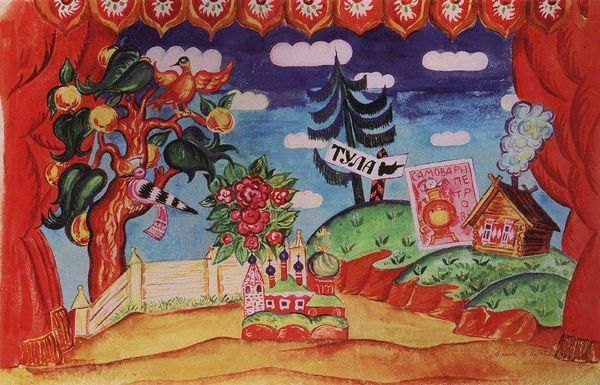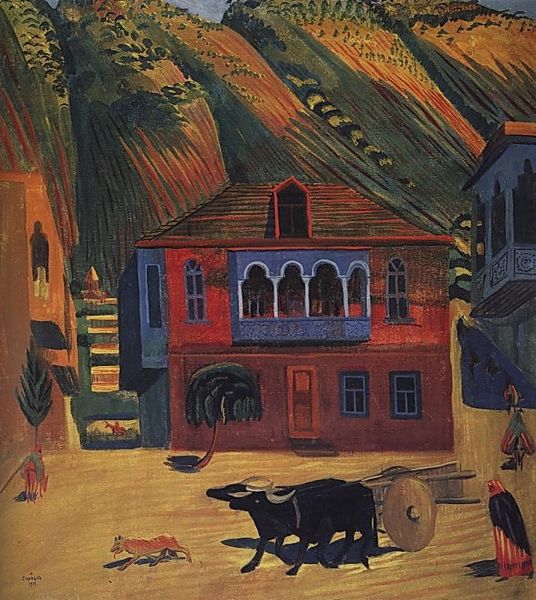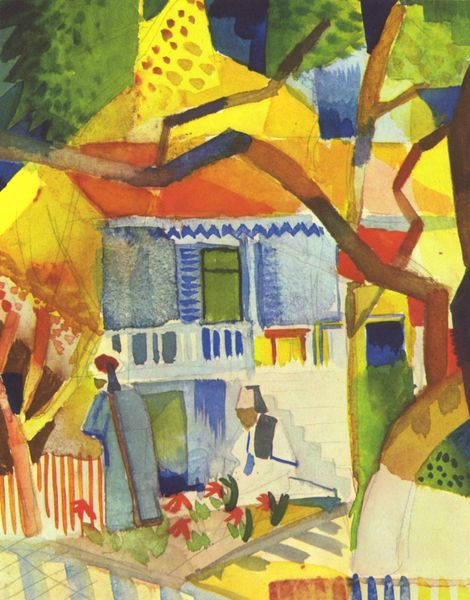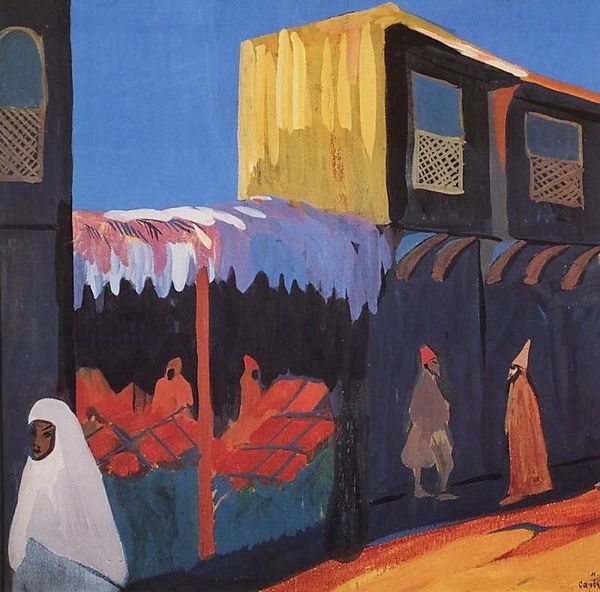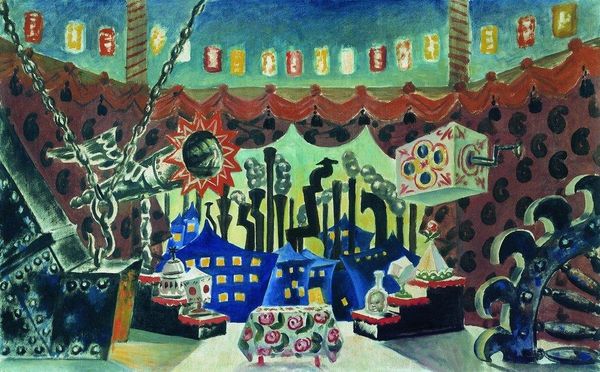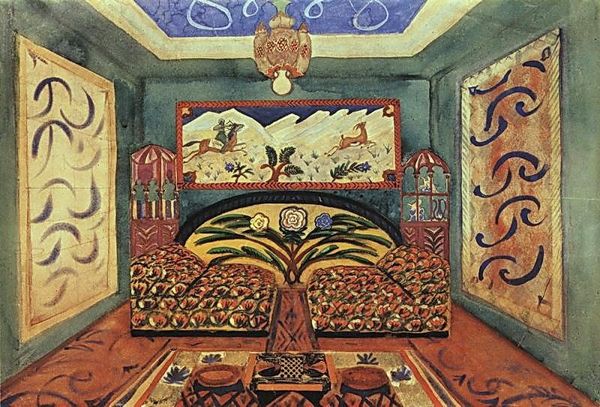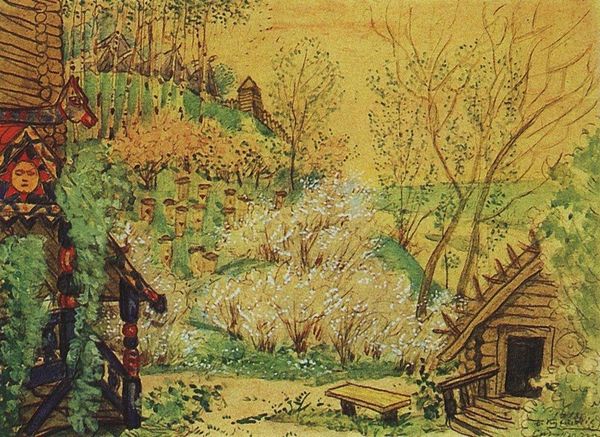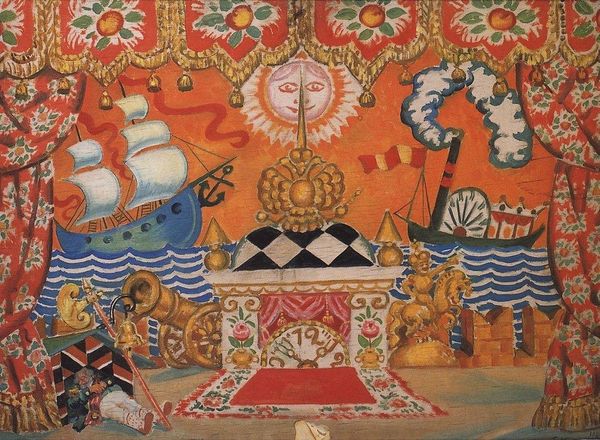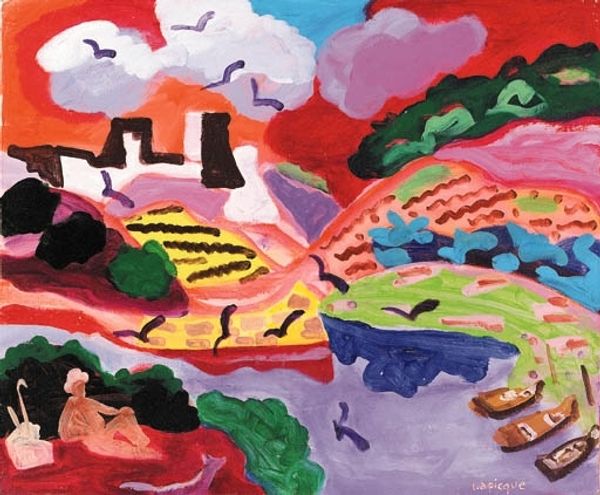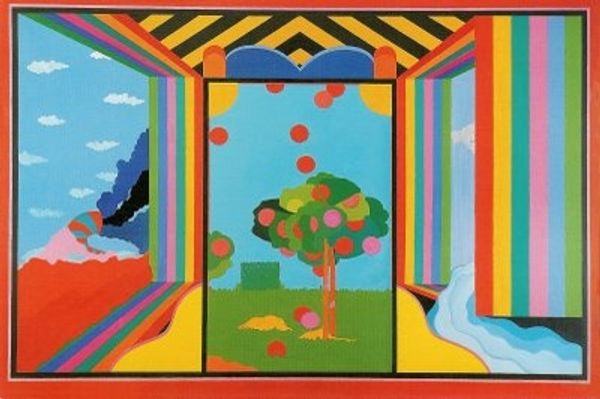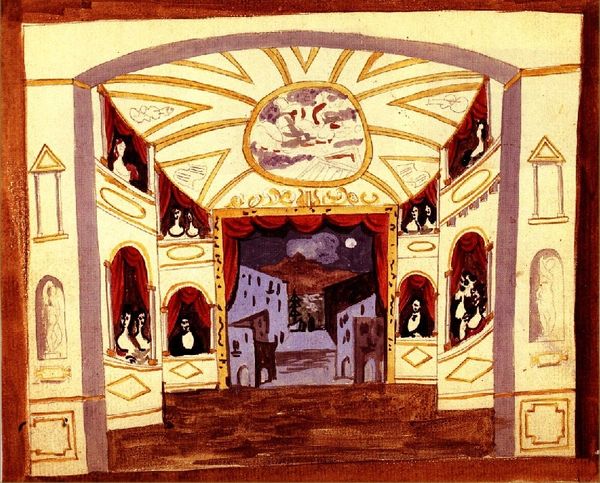
painting, oil-paint, watercolor
#
water colours
#
painting
#
oil-paint
#
landscape
#
oil painting
#
watercolor
#
folk-art
#
orientalism
#
russian-avant-garde
#
genre-painting
#
watercolor
Copyright: Public domain
Curator: Boris Kustodiev's 1925 painting, "The Hut of Savely Magar," presents us with a fascinating visual arrangement. My first impression is its theatrical quality, almost like a stage set. The colors are vivid, and there’s a naive, almost childlike simplicity in the representation. Editor: The folksiness certainly strikes me too. But it's interesting how you use the word 'theatrical,' because to me, it feels deeply connected to the labour of representing domestic life. The red patterns throughout – the curtains, tablecloth, dress – could point to the domestic production of textiles, of weaving and craft within the peasant household. Curator: That's an interesting read on the visual fabric, so to speak. I’m drawn to how the architectural forms are rendered. The hut itself, with its simple geometric shapes, offers an exploration into spatial representation that resonates with early avant-garde sensibilities. Notice, too, how the interior and exterior collapse—there’s very little sense of conventional depth. Editor: Exactly. The collapse of space makes me consider the conditions of the painting's production. Watercolor and oil paints were common, accessible materials. This choice reflects the material limitations faced by artists at the time but also perhaps, an intentional nod to folk-art practices, avoiding the pretension of high art and leaning towards everyday artistry. Curator: And the composition! It's as if Kustodiev is playing with different perspectives, layering the image like a collage. There's a flattening of the picture plane and deliberate use of bold colors. A focus not on illusionism, but on the arrangement of forms to create an image. Editor: Absolutely, I agree with you! But let’s push further on the notion of ‘flattening’. Doesn’t that simplification bring forward the sheer materiality of the paint? See how roughly applied these pigments are – the evidence of hand evident, and with it, the implied labor and resources consumed to produce the scene for viewers. Curator: This approach invites us to think about Kustodiev’s personal artistic choices and how the shapes build on each other. Editor: This leads us to the broader question of the labor that’s both visible and invisible within this constructed space, and also highlights his skill with such available means.
Comments
No comments
Be the first to comment and join the conversation on the ultimate creative platform.
